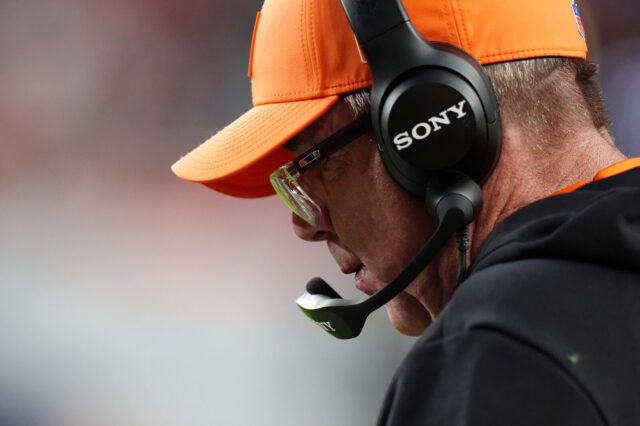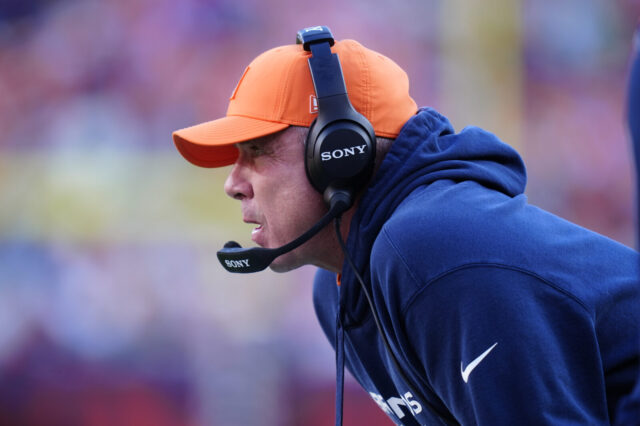The 2017 NFL Draft is just weeks away, and the Denver Broncos have an opportunity to make some significant improvements to their roster. After going 9-7, and missing the playoffs for the first time in over five years, this teams has some holes to fill.
The 2016 team suffered from a lack of talent, and depth, on both sides of the ball. The offensive line needs to be significantly upgraded, the defensive line has to become more of a force, and the offense could use a few more playmakers.
This year’s draft is deep with talent, and the Broncos should be able to fill out a few areas of need, as they are scheduled to have 10 selections. Could this year end up being one of the best drafts in franchise history?
Denver has some past draft classes that were loaded with talented players. Here are five of the greatest draft classes in club history.
5. Class of 1967
This one may not have the depth of some of the others, but you can make a pretty strong case that there has never been a more important draft class than the one of 1967.
After beginning as a charter member of the American Football League in 1960, the Denver Broncos struggled to gain any sort of momentum. They were the lone member of the league to never play for an AFL championship, and players had no interest in joining the team.
The Broncos drafted a number of big name college players including Dick Butkus, Bob Brown, and Merlin Olsen only to see them join NFL teams instead. That all changed when the Denver Broncos selected Syracuse running back Floyd Little with the sixth overall pick of the 1967 draft.
Little actually came to Denver, and changed the entire path of the franchise. He rushed for over 6,000 yards, scored 54 touchdowns, and would eventually be elected into the Pro Football Hall of Fame. Third-round pick offensive tackle Mike Current also played nine solid seasons in Denver, but Little alone makes the 1967 class a memorable one.
4. Class of 1985
In 1985, the Denver Broncos were looking to surround their young franchise quarterback John Elway with some talent on the offensive side of the ball. In the first round, they were able to grab Oklahoma running back Steve Sewell, who would become a do-everything offensive threat. Sewell could run, block, catch, and even managed to throw a touchdown in his seven-year career.
Then the Broncos had two second round picks. The first was used on Arizona wideout Vance Johnson. Johnson would become one of Elway’s favorite targets, catching over 400 passes, and scoring more than 40 touchdowns. With their second pick of the second round, Denver selected an undersized linebacker out of the University of Houston. Simon Fletcher would play 11 seasons for the Broncos, and is still the all-time franchise leader in sacks, with 97.5.
3. Class of 1983
You might have thought this draft class would be higher, because of the acquisition of John Elway. That definitely plays a part in this class coming in at No. 3, but the Broncos actually drafted Northwestern tackle Chris Hinton, and then traded him for Elway.
Hinton would go on to a solid career with the Colts. In addition to the Elway trade, the Broncos were also grab to grab a relatively unknown quarterback by the name of Gary Kubiak. Kubiak would prove to be a dependable backup to Elway, and would eventually lead the Broncos to a Super Bowl victory as their head coach, in 2015.
However, the steal of the 1983 NFL Draft would be when the Broncos would select an undersized “tweener” defensive player from the University of Minnesota, that somehow lasted until the 12th round. Karl Mecklenburg would play 12 incredible seasons in Denver, making the Pro Bowl six times, and logging 79 sacks.
2. Class of 1973
The Broncos were beginning to build a respectable franchise, and this draft class would go a long way toward doing just that. With their first-round selection, the Broncos grabbed Purdue running back Otis Armstrong, who would rush for over 4,000 yards in his eight seasons in Denver.
South Carolina State defensive end Barney Chavous was taken in the second round, and was named the NFLPA Rookie of the Year. He would play 13 highly productive seasons as a Bronco.
In the third-round, Denver grabbed BYU offensive guard Paul Howard, who would become a pillar on the offensive line for 13 seasons. Finally, in the fourth round the Broncos were able to grab a feisty outspoken linebacker named Tom Jackson out of Louisville. A fan favorite, Jackson would play 14 years in Denver and would become a vocal leader of the Orange Crush defense.
1. Class of 1975
Former Broncos head coach John Ralston certainly had his detractors as a coach, but you can’t argue with his eye for talent. In 1975, Ralston put together the greatest draft class in franchise history.
It started with their first-round pick, when they selected San Jose State cornerback Louis Wright, a true shutdown corner. Wright was a five-time Pro Bowler, and twice named an NFL All-Pro.
In the fourth round, Ralston grabbed Rick Upchurch, a speedy wideout from Minnesota. Upchurch would be voted to four Pro Bowls in his nine-year career. He would go on to set the club record for most punt returns for touchdowns, with eight.
Miami defensive tackle Rubin Carter was selected in the fifth round, and was a crucial piece of the famed Orange Crush defense. As the Broncos transitioned to a 3-4 defense under Joe Collier, Carter would serve as the anchor of the defensive front.
Finally, in the eighth round, the Broncos would choose a little-known quarterback from Tulane. Steve Foley would move to the defensive backfield in Denver. He would play 11 seasons for the Broncos, and he is the all-time interception leader in franchise history with 44 picks. I
n all, the class of 1975 would produce nine Pro Bowls, three members of the Denver Broncos 50th Anniversary team, and two Ring of Fame inductees.



